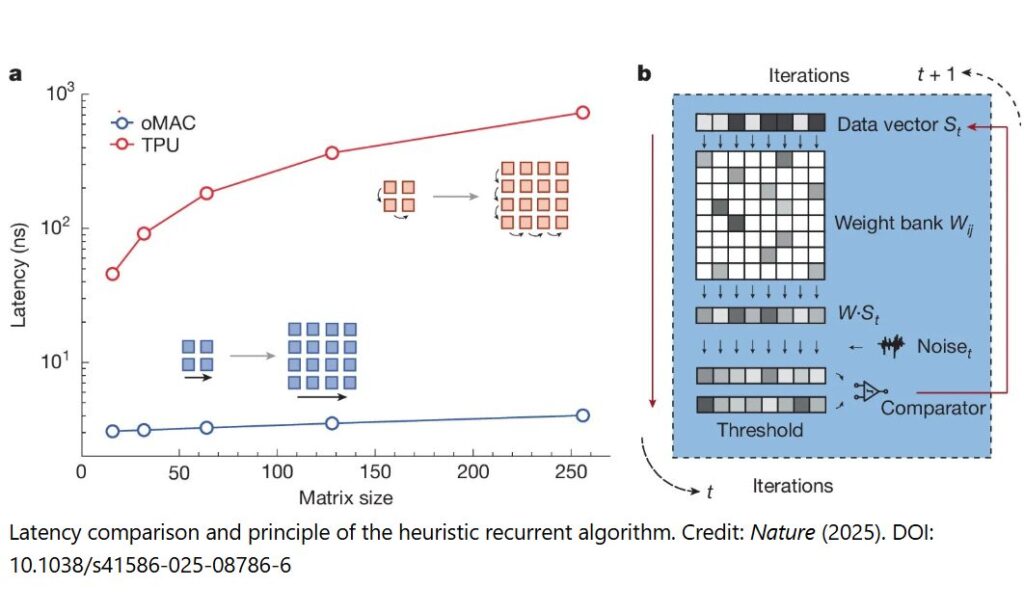
Computer chips that combine the use of light and electricity are shown to increase computational performance, while reducing energy consumption, compared with conventional electronic chips. The photonic computing chips, described in two papers in Nature this week, might address the growing computing demands driven by advancing artificial intelligence technology.
The growth in the complexity of artificial intelligence and deep learning models is pushing conventional electronic computing to its limits and has ever-increasing energy demands. Photonic computing, which uses photons rather than electrons, presents a potential solution to these challenges.
Multiplication and accumulation—central computational operations for artificial intelligence—can be performed faster and more efficiently using photonics circuits. Such advantages have been difficult to demonstrate in hardware that integrates photonic chips into conventional electronics, but two new papers probe the performance of photonic computing chips integrated with silicon electronics.
Bo Peng and colleagues demonstrate a photonic accelerator, called PACE, that allows very low latency computing, a measure of computational speed that is important for real-time processing.
The large-scale accelerator, comprising more than 16,000 photonic components in a 64 x 64 matrix, enables high-speed computing (up to 1 GHz) and demonstrates up to a 500-fold reduction in minimal latency compared with small-scale circuits or single photonic components. PACE is shown to solve hard computational problems known as Ising problems, demonstrating the feasibility of the system for real-world applications.
In an independent paper, Nicholas Harris and colleagues describe a photonic processor that can efficiently implement AI models with high accuracy. The processor, which consists of four 128 x 128 matrices, can execute the natural language processing model BERT and a neural network called ResNet (used for image processing) at accuracies similar to those of conventional electronic processors.
The authors show that their photonic processor has a range of applications, including generating Shakespeare-like text, accurately classifying movie reviews, and playing classic Atari computer games such as Pac-Man.
Both teams suggest that their systems are scalable, though further optimization is needed.
“Photonic computing has been in the making for decades, but these demonstrations might mean that we are finally about to harness the power of light to build more-powerful and energy-efficient computing systems,” notes Anthony Rizzo in an accompanying News & Views article. https://techxplore.com/news/2025-04-photonic-chips-boost-efficiency-demand.html









Recent Comments